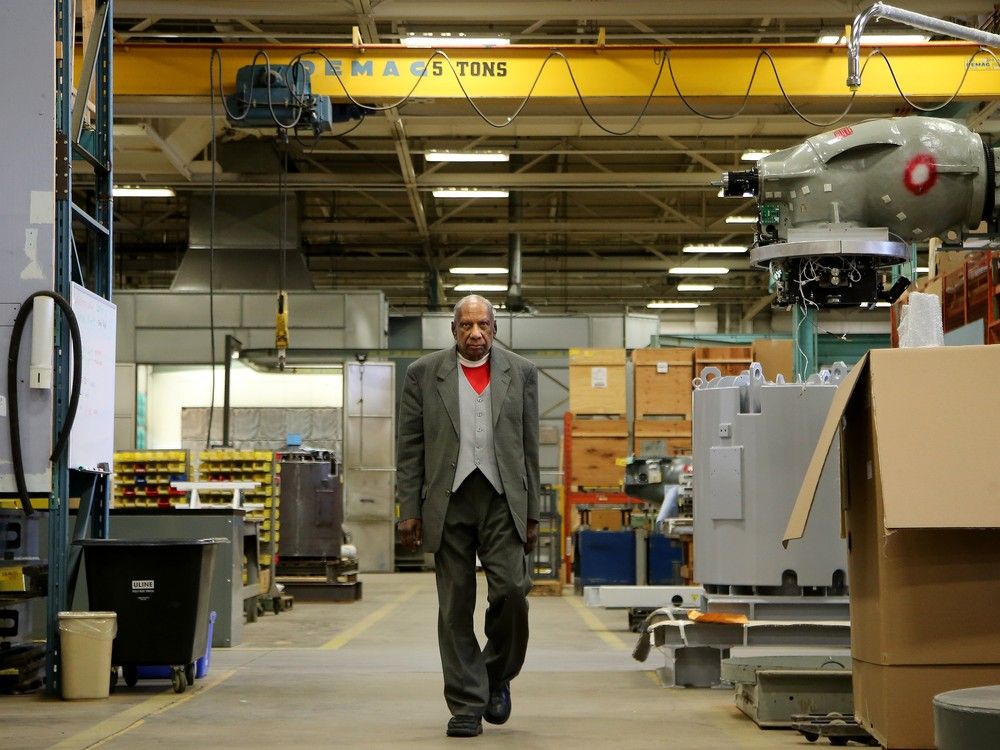The owner of a Kanata plant that produces nuclear medical equipment has until Nov. 5 to submit a detailed inventory of nuclear material, including several tonnes of depleted uranium, Canada’s nuclear safety watchdog says.
If Best Theratronics plans to transport those regulated materials, it must also submit a plan for shipping sealed sources, the Canadian Nuclear Safety Commission says.
“Failure to comply with the conditions of the order can lead to further regulatory measures, including licensing actions or other regulatory enforcement measures available under the Nuclear Safety and Control Act,” spokesperson Braeson Holland said.
Best Theratonics has a class 1B licence, which authorizes it to manufacture cyclotrons and medical equipment, including cobalt-60-based external beam radiation therapy units and cesium-137 self-contained blood irradiators. In October, Best Theratronics owner Krishnan Suthanthiran said he would
no longer manufacture equipment requiring CNSC compliance
and was moving that category of production to the United States and India.
The March Road plant was the target of a strike that lasted almost 10 months. In February, the Canada Industrial Relations Board decided that the employer
failed to bargain in good faith
. Best Theratronics has also
failed to produce a $1.8-million decommissioning guarantee
to the CNSC, a continuing source of friction between the manufacturer and the nuclear regulator.
In response to a request for comment, Suthanthiran said Best Theratronics was “in the process of reviewing and responding to the CNSC order, generated at our request” to relocate operations.
“We are currently planning to submit a schedule in complying with the order.”
According to the Oct. 22 CNSC decision, the regulator held a virtual hearing on Sept. 22 and an inspection was conducted during the week of Sept. 15. During that week, inspectors found 8,753 kilograms of depleted uranium.
Depleted uranium is a by-product of uranium enrichment. It is mildly radioactive, about 60 per cent less radioactive than natural uranium, according to the CNSC.
Depleted uranium metal is commonly used as shielding in medical radiation therapy and industrial radiography equipment and as a counterweight in aircraft. Some countries use it to produce ammunition, but this does not occur in Canada, according to the CNSC.
Any waste generated from imported depleted uranium is stored according to the strict safety requirements, according to the CNSC, which monitors nuclear licensees to ensure regulatory compliance and the safety of workers, the public and the environment.
“The risks of long-term depleted uranium storage in Canada are very low because there are only small amounts of the substance. (Depleted uranium) waste in Canada is also mixed with other non-radioactive materials and kept in robust, reliable facilities,” the CNSC said.
The 8,753 kilograms of depleted uranium mentioned in the decision is the equivalent of 8.8 metric tonnes. To put that into context, about 1,500 metric tonnes of depleted uranium in different forms were stored at Cameco in Port Hope, Ont., as of 2009, according to the CNSC. The Port Hope facility is the only uranium conversion facility in Canada.
In the United States, about 740,000 metric tonnes of depleted uranium, in the form of depleted uranium hexafluoride, were stored in cylinders awaiting further processing for safe disposal as of 2009.
Earlier this year, CNSC said the purpose of the
$1.8 million financial guarantee
was to provide for the safe disposal of high-risk sealed sources and licensed material. There was no risk to the public or the environment stemming from the non-compliance around the financial guarantee order, the CNSC said at the time.
In an interview on Oct. 16, Suthanthiran said the Kanata plant would stay in business, but would not produce equipment that required a nuclear licence, arguing there was no need to provide the guarantee to CNSC.
According to the Oct. 22 decision, Best Theratronics requested the commission’s authorization to ship all of the materials in its inventory, including the depleted uranium, which can be recycled, and would relinquish its 1B licence.
On the subject of the guarantee, Best Theratronics cited “cash flow problems” and acknowledged that it wanted to remove nuclear substances from the site as soon as possible, but felt that this should reduce the required financial guarantee. Best Theratronics asserted that $236,000 was enough for decommissioning, but the CNSC’s position was that the company must first establish a financial guarantee “to accurately reflect its inventory.”
Best Theratronics also expressed interest in continuing to manufacture and ship prescribed equipment, such as cyclotrons, that do not contain radioactive substances, according to the decision. However, CNSC insisted that the financial guarantee be established. Only then could CNSC staff assess BT’s continued operations.
The decision noted that manufacturing and servicing this equipment was also a licensed activity. If Best Theratronics plans to transport the nuclear materials, it still needs to obtain an export licence, fulfill transportation requirements and comply with sealed tracing protocols.
In an interview on Oct.16, Suthanthiran contended that there was still plenty of demand for non-radioisotope products manufactured by Best Theratronics, such as blood irradiators.
Suthanthiran, who is based in the U.S., has repeatedly said he would shift operations overseas,
claiming better business conditions
. The workforce at the Kanata plant has dwindled from 200 workers before the strike to about 60 workers now, he said in October.
CNSC and Best Theratronics have “communications issues,” the CNSB decision said.
“The Commission expects Best Theratronics Limited to be forthcoming and to work with CNSC staff in a transparent, responsive and collaborative way.”
Related
- Best Theratronics medical manufacturing to remain in Kanata, but will forgo nuclear licence
- Best Theratronics needs financial guarantee before resuming operations



